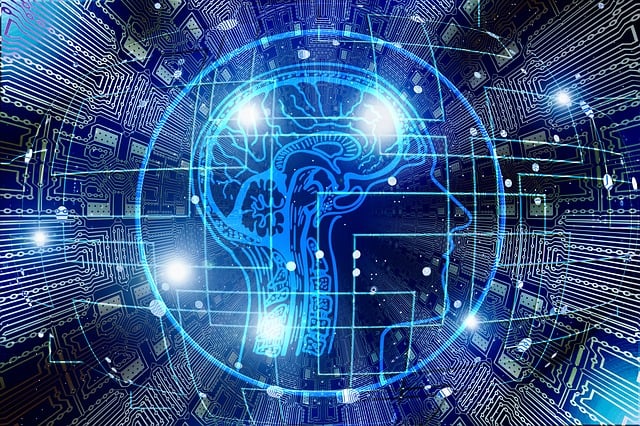What are 5 types of Artificial Intelligence and examples of each type
Table of Contents
Introduction
Artificial intelligence (AI) is one of the most transformative technologies of our time. AI refers to computer systems or machines that can perform tasks that normally require human intelligence. In simple terms, that’s what it is. These tasks include visual perception, speech recognition, and decision-making. AI has become deeply ingrained in our everyday lives. Digital assistants like Siri and Alexa use AI. Netflix and Amazon use AI in recommendation engines. Self-driving cars also use AI.
(If you are interested in how this translates to real life, see our article on how we can use AI tools in daily life.)
The capabilities of AI systems are rapidly evolving due to key innovations in the field of machine learning and deep learning. There are several types of AI, each with their own strengths and capabilities. Broadly, AI can be divided into 4 main types:
Reactive Machines
Reactive machines are the most basic type of AI systems. They operate by reacting to the present situation without taking into account the past. These systems do not have an internal model of the world or memory. They simply respond to stimuli from the environment.
Reactive machines are designed to perform a narrow task very efficiently. They excel at tasks like playing chess or Go, where the next best move is dependent only on the current position on the board. Deep Blue, the chess-playing computer that beat Garry Kasparov, and AlphaGo, the Go-playing bot that defeated Lee Sedol, are examples of reactive machines. These systems evaluate millions of positions per second and choose the move that is most likely to lead to a win.
Other reactive machines include some video game NPCs that wander and react to the player’s movements. Spam filters classify emails based only on their contents. Robots react to sensor data to avoid obstacles. The key advantage of reactive machines is their speed and efficiency at specific tasks. Their simplicity allows them to outperform humans at some constrained problems. However, their inability to learn and adapt makes them brittle outside narrowly defined environments.
Limited Memory
Limited memory AI systems build on reactive AI systems by adding the ability to learn from historical data to optimize their output. Reactive AI systems can only react to the current situation based on pre-programmed rules. Limited memory systems can look at past experiences to inform their next actions.
This allows limited memory systems to learn patterns and adapt their behaviors based on that learning. For example, a limited memory AI system powering a self-driving car can log data on all its past rides. It can analyze this ride history data. It learns the safest driving routes, recognizes dangerous situations, and refines its real-time decision-making.
Other limited memory AI examples include virtual assistants like Siri or Alexa. They can continuously improve speech recognition and language understanding based on conversations with users. Netflix and Amazon use recommendation systems. They rely on limited memory AI to analyze customer histories. This helps them build personalized suggestions for future content or purchases. The key advantage of limited memory is the ability to learn and optimize behaviors over time, beyond pre-programmed rules.
Theory of Mind
Theory of mind AI represents a major advance in how machines can think and act more like humans. Earlier forms focused on specific task completion. Theory of mind AI aims to understand human needs, emotions, beliefs, and thought processes.
This allows AI systems to interact with people in more natural and intuitive ways. Theory of mind AI powers social robots, digital assistants, and other technologies meant to engage with humans conversationally.
Some examples of theory of mind AI include:
- Social robots like Pepper that can read human emotions and body language. This allows Pepper to respond appropriately and have more human-like conversations.
- AI assistants like Siri or Alexa that understand context and intent behind human requests. This makes interactions feel more natural compared to simply following programmed commands.
- Game AI like video game characters that make decisions based on perceived motivations and mental states of human players. This creates more immersive and realistic experiences.
- Automated customer service chatbots that can gauge customer sentiment and adapt responses accordingly to improve satisfaction.
Theory of mind remains an ongoing challenge in AI development. Today’s systems have some human-like abilities. However, significant progress is needed to match the full depth of human cognition and reasoning. However, advancements in deep learning and neural networks show promise. They may lead to developing AI with strong theory of mind in the future.
Self-Aware AI
Self-aware AI represents the most advanced AI systems that exist today. Self-aware AI involves machines that can form representations about themselves. They can also reason about their own cognition. This type of AI has a sense of self and can reflect on its own capabilities.
While no true self-aware AI exists yet, researchers are making advancements in this direction. For example, some AI systems today can monitor and report on their own internal states. However, these systems still operate within very narrow parameters and don’t have a generalized sense of self.
True self-awareness in AI will likely emerge gradually. As systems become more complex and can recursively improve themselves. Self-aware AI may be able to explain its actions. It may demonstrate self-preservation and, potentially, have consciousness. This could lead to AI that has its own motivations and can act more independently.
Despite ongoing progress, we are still far from creating truly self-aware AI. We need significant breakthroughs in areas such as open-ended learning, memory architectures, meta-cognition, and forming representations of self. Self-aware AI also raises ethical issues. We will need to address the extent of autonomy we grant advanced AI systems. Overall, self-aware AI represents an exciting frontier, but we have considerable work ahead before achieving this AI milestone.
Superintelligent AI
Superintelligent AI, also known as Artificial General Intelligence or AGI, refers to a hypothetical AI system. It possesses intelligence and capabilities that greatly exceed human-level cognition across many domains. While no examples of superintelligent AI exist yet, some researchers believe it could emerge within this century if AI capabilities continue to rapidly advance.
A superintelligent AI system would be able to improve itself and gain greater intelligent capabilities. Humans cannot fully comprehend this. This could lead to an “intelligence explosion.” It could rapidly leave human intelligence far behind. Some leading AI researchers have raised concerns about existential safety risks from unchecked superintelligent AI.
Superintelligent AI presents opportunities to solve humanity’s greatest challenges. However, experts caution that without proper safety precautions, it could pose catastrophic global risks. This could happen if we don’t develop it carefully and align it with human ethics and values. Controlling superintelligent AI remains an open technical challenge. Ensuring it acts for the benefit of humanity remains an open technical challenge. Further research into AI safety and alignment is needed before superintelligent AI could become a reality.
Reactive Machine Examples
Reactive machines are the most basic type of AI system. Here are some examples:
- Self-driving cars use sensors like cameras and radar to perceive the environment. They react and make navigation decisions based on this sensory input. They have no memory or ability to use past experiences to inform future actions. The AI system detects obstacles and reacts by braking or steering to avoid collisions.
- Simple chatbot AI relies entirely on pattern matching to classify user input. It responds with hardcoded phrases and sentences. There is no memory or deeper understanding of the conversation. The chatbot reacts only based on the current user input.
- Spam filters: Spam filters use rules to classify emails as spam or not spam. There is no understanding of the context or meaning of the emails. The filter simply reacts to the presence of certain keywords, links, or patterns that indicate spam. New emails are classified independently, with no memory used.
- Industrial robots: Most factory robots are programmed to perform repetitive tasks precisely. They perceive their environment through sensors, but cannot plan or form goals. These are reactive AI systems with no memory that simply respond to sensory inputs. For example, a robot arm picks up objects from a conveyor belt. It is pre-programmed to repeat that motion without understanding context.
Limited Memory Examples
Limited memory AI systems can store and learn from experience. However, their memory is limited compared to human intelligence. Here are some examples of limited memory AI systems:
- Chatbots like Siri, Alexa, and Google Assistant can have conversations with users. They can understand context and previous inputs to some extent. They continually expand their knowledge base from interactions. However their memory is finite and focused on specific use cases.
- Self-driving cars rely on sensors, maps, and image recognition. They use these tools to perceive the driving environment. They are autonomous vehicles. They can plan routes, follow traffic rules, detect obstacles and make decisions. But they operate in a constrained environment and don’t have generalized intelligence. Their memory is specialized for driving tasks.
- Recommendation engines are used by services like Netflix and Amazon. They study customer habits, make recommendations based on previous purchases and activity. They have some short-term memory of a user’s interests but lack deeper understanding. Their knowledge is narrowly focused on consumption predictions.
- Voice recognition: Voice assistants like Siri and Alexa can continuously improve their speech recognition capabilities. They use machine learning. But their memory and knowledge focuses specifically on mapping sounds to words. They interpret speech commands, rather than comprehending broader language.
Theory of Mind Examples
Theory of mind AI systems are designed to understand human emotions. They also aim to understand human motivations, beliefs, and thought processes. Here are some examples of current theory of mind AI:
- Social robots like Pepper: Pepper is a humanoid robot developed by Softbank Robotics to be a social companion. It can recognize basic human emotions like joy, sadness, and anger. This is through its ability to analyze facial expressions and vocal tones. Pepper adapts its responses and behaviors to the perceived emotional state of the human it is interacting with.
- AI assistants like Alexa or Siri have theory of mind capabilities. This helps them understand natural language requests and respond appropriately based on context. It also helps them build an emotional connection. They also use humor and personality in their responses. Their system design draws on research of human psychology and conversational patterns.
- Game NPCs in many modern video games are designed with simple theory of mind abilities. This helps them interact more naturally with the player. Based on the choices the player makes in the game, the NPC may change its attitude and actions towards the player. Sophisticated game AI can build an impression of the player’s motivations and personality. It responds in character-consistent ways.
Conclusion
Artificial intelligence is a broad and complex field. It encompasses many different types of AI systems, each with their own capabilities and limitations. This article examined four of the main categories or types of AI:
- Reactive Machines – Simple AI systems that can react to inputs but do not have memory or the ability to learn. Examples include chess computers and chatbots.
- Limited Memory – AI systems that in addition to reacting, can also learn from experience and build on previous knowledge. Self-driving cars and digital assistants like Siri are examples.
- Theory of Mind – AI that is capable of understanding emotions, beliefs, perceptions and thoughts of others. Still an aspirational type of AI not yet achieved.
- Self-Aware AI – AI that has consciousness, sentience and self-awareness like humans. This is still theoretical but raises important ethical questions.
- Superintelligent AI – AI that has cognitive abilities far surpassing the best human minds across many domains. Again still theoretical and raises complex issues.
Understanding the differences between these AI types gives us a better sense of the current state of AI development and capabilities. It also sheds light on where AI systems are heading. It helps frame important conversations around the future of AI and its potential impacts on society. Artificial general intelligence that rivals or exceeds human intelligence remains elusive for now. Rapid advances in AI promise many transformative breakthroughs in the years ahead.







